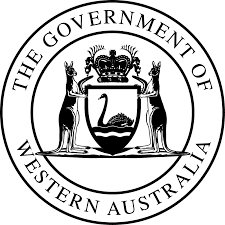 Loading... Please wait...
Loading... Please wait...Australia’s leading manufacturer of safety cable covers and protectors
- SATISFACTIONGUARANTEE
- FREESHIPPING*
- SECURESHOPPING
- 1300-137-875Contact Us
OHS 101 - Understanding Basic Safety Rules
Posted by Olivia Tunhage on 17th Nov 2019
Occupational Health and Safety (OHS) rules aim to keep your workplace safe. OHS is often implemented through the use of an OHS program. The program is a specific plan of actions designed to prevent accidents and occupational diseases. Some form of the program is often required under OHS legislation in most Australian jurisdictions. A health and safety program must include the elements required by the health and safety legislation as a minimum.
Organisations are different; a program created for one organisations workplace cannot necessarily be expected to meet the needs of another workplace. Health and safety is the joint responsibility, and while your organisation will have different needs and scope for specific elements required in their health and safety program. It is important to understand the basic safety rules that could increase the safety of your workplace; the following basic rules should be considered in each case.
- Even though health and safety is the joint responsibility of management and workers, it is important to consider individual responsibility. Individual responsibility may be defined as an individual obligated to carry out assigned duties. It is essential that all employees know what is expected of them in health and safety terms, such as have authority and the competence and training required to carry the tasks out.
- A safety committee, the cooperative involvement of all employees is essential to create an effective safety program. A shared health and safety committee is a forum for collaborative involvement of employees representing both labour and management.
- Correct work procedures need to be established. Workplaces
need rules to protect the health and safety of workers, but it is also dangers
in having both too few or too many rules. Few rules can be interpreted as a
sign that health and safety are not that crucial. On the other hand, too many
rules might be seen as a sign of not treating employees as thinking adults.
Consider these tips when establishing rules; rules should be stated in clearly
understandable terms, be specific to health concerns, stated in positive terms,
such as “workers should” and not “workers should not” and finally explain the
reasons for the rules.
- Employee orientation and training. Health and safety training should begin with employee orientation when an employee joins the organisation. Inexperienced employees are more frequently involved in accidents than experienced workers. Health and safety training can be used to improve this, and an orientation session often covers this and explain the safety practices. Things associated with health and safety that should be included in employee orientation and training are; emergency procedures, location of first aid stations, safety responsibilities, how to report injuries and reasons for each rule.
- Emergency procedures – are plans for dealing with emergencies such as explosions, fires, natural hazards and violent occurrences. When emergencies like that happen, the urgent need for a fast decision, lack of time, resources, and trained workers can worsen the situation. An emergency procedure plan can result in less chaos and problems. The objective of an emergency plan is to prevent accidents and hazards. So the organisation need to define how to handle those situations in the plan. It could be by identifying possible hazards and the consequences, doing an inventory of resources needed to carry out the planned actions, and determining the required countermeasures.
- Lastly,
the implementation, a good health and
safety program provides a clear set of guidelines for the actions and
activities that will reduce accidents and cases of occupational disease. A key
to succeeding is to implement the program in the right way. This means,
communicating the program to all employees, emphasis should be given to new
workers, making all health and safety information available to all workers, and
include health and safety performance as part of employee performance
appraisals at all levels.






